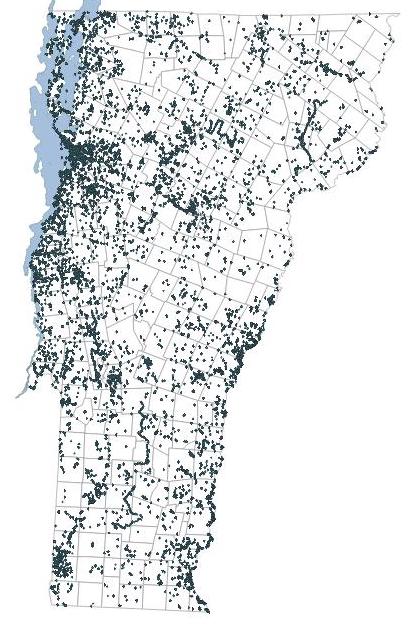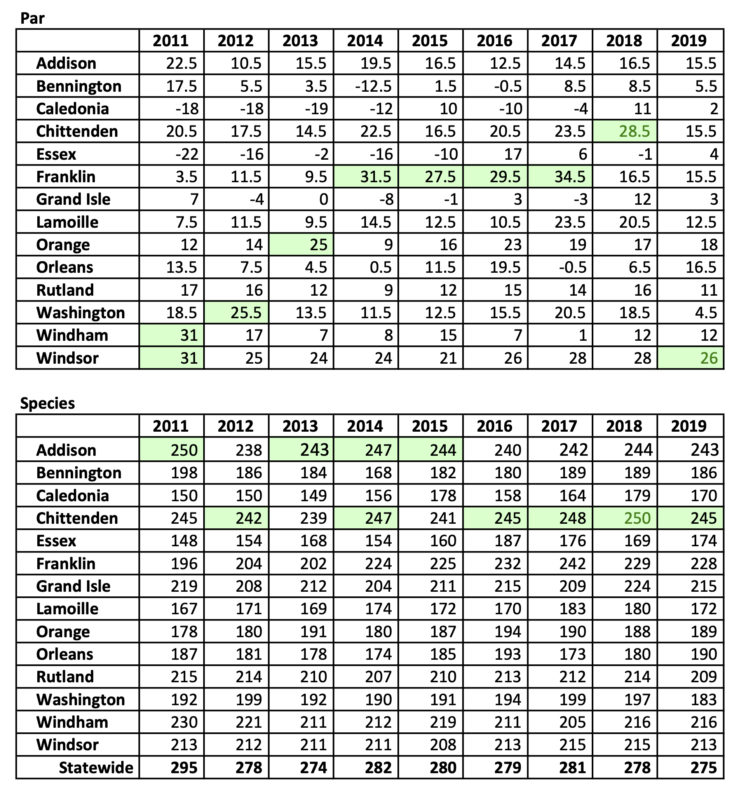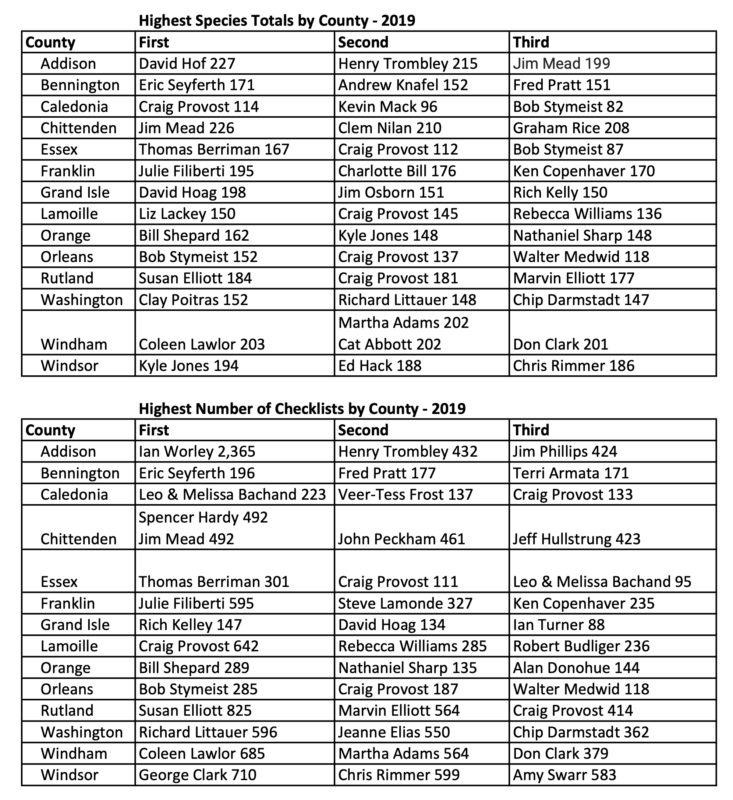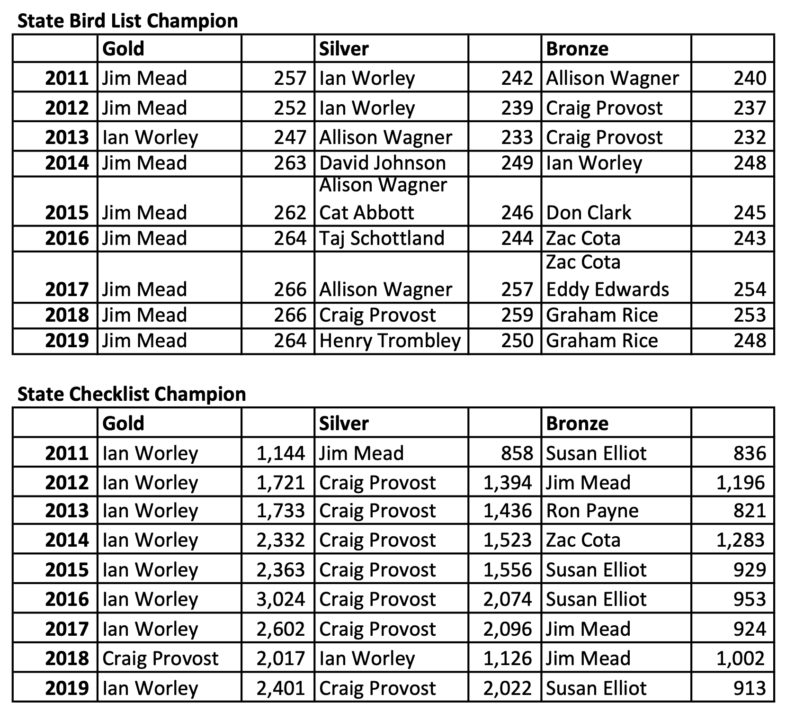From the first day of 2019 when eBirders reported an incredible 73 bird species, to the discovery of a Say’s Phoebe (a rare visitor) in late November, Vermont birders scoured fields and fens, mountains and meadows, lakes and lawns to find as many bird species as possible during the 9th annual Vermont eBird County Quest. In the process, they also collected invaluable data for science and conservation.
The annual year-long contest pits county versus county, birder against birder, all engaged in a friendly rivalry for top birding honors. The main idea behind the year-long Quest is simply to get people out birding, promote camaraderie, and better document bird life across the state—using Vermont eBird.
2019 marked the 16th year for Vermont eBird, the first state or provincial portal for eBird. Bird watchers have shared an astounding number of checklists, making Vermont eBird (a project of the Vermont Atlas of Life) the largest citizen science biodiversity project in the state. Nearly 8,825 Vermont eBirders have submitted just under 375,000 complete checklists, representing all 385 species of birds ever reported from Vermont. We’ve added almost 75,000 images, over 4,700 sound recordings, and 10 videos to Vermont checklists, creating an incredible open access resource.
It isn’t just about Vermont. There are now more than 500,000 eBirders worldwide who have contributed sightings from out their windows, on their way to work, or at visits to parks, ponds, and fields. eBirders have collected more than 737 million bird observations, continuing to make eBird the world’s largest biodiversity-related citizen science project.
Science and Conservation
And, of course, eBird isn’t all just for fun. It’s for science and conservation, too. 2019 was a milestone year for eBird, delivering a new era of scientific and conservation applications, innovative new birding tools, and much more. As always, all of this is 100% free of charge to anyone who wishes to use it. Here are some highlights:
- 2019 featured the first annual update of eBird Status and Trends, which now provides status and distribution information for 302 species. Trends and additional species will be coming in the first half of 2020. These results are the culmination of eBird’s initial vision of connecting birders around the world in a way that informs research and conservation. Explore more.
- Researchers published 58 peer-reviewed publications incorporating eBird data this year, bringing the total number of peer-reviewed publications using eBird data to over 300. See all eBird publications here.
- eBird data downloads are updated monthly and continue to be a free resource that is accessible via the Data Download page. More than 100,000 people downloaded raw eBird data for analysis and more than 5,200,000 people visited the eBird website in 2019.
Of course, none of this would be possible without people like you sharing your incredible observations with eBird.
Green Mountain eBirders Put Up Huge Numbers in 2019
With 47,186 complete checklists submitted to Vermont eBird, comprising over a half-million records, representing 278 bird species, tallied by over 2,600 Vermont eBirders in 2019, there is no doubt it was another banner year for birders and Vermont eBird.
Vermont eBird County Quest Champions
In 2018, Windsor County came up just one bird short. In 2019, they set out to make sure it didn’t happen again. With 26 birds over par, Windsor County blew the competition away. Congratulations to all the birders who helped the county claim the 2019 Quest Cup. Thanks to some great individual efforts, Orleans County was the runner up with 16.5 birds over par.
The County Cup award is based on a carefully calculated “par” system, recognizing that not all Vermont counties are created equal in terms of avian diversity. Par scores reflect the number of species that a given county should find in a year with consistent birding effort. Each year a particular county wins, five birds are added to their par.
Rich in birders and species, Chittenden County continued its reign with the highest number of bird species found (245). Their perennial rival, Addison County, was second with 243 species.
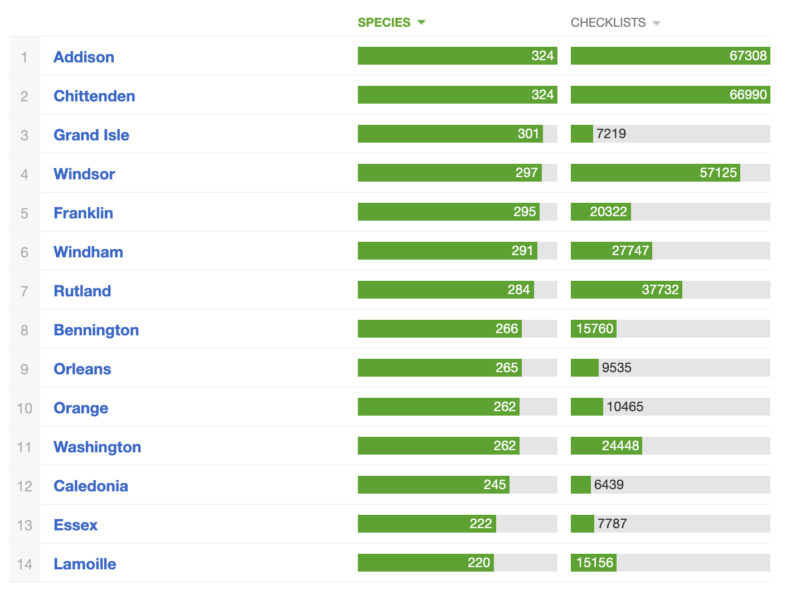
Number of species and complete checklists for each county in Vermont eBIrd. Click on the graphic to explore each county at Vermont eBird.
Individual County Winners
These titles are awarded to the birders with the most checklists for each county and to the birders with the highest species count for each county. No par or weighting necessary for this one!
Visit the Vermont eBird Top 100 list to get a full tally of Checklist and Species List Champions for any year. Simply select the county you are interested in, then on the next page select the year you would like to see in the upper right corner.
Statewide Winners
Many birders ventured outside their home county, of course. Jim Mead continued his dominance in total species observed, tying his record of 264 species, followed by a new name on the big list, Henry Trombley (250), and Graham Rice in third (248). Ian Worley continued his dedicated and remarkable eBirding with 2,401 complete checklists. Craig Provost wasn’t far behind with 2,022, followed by Sue Elliott with 913.
The County 150 Club
eBirders who identified 150 species or more in a county are inducted into the prestigious “150 Club.” Even in counties with higher avian diversity, a birder must be dedicated and in the field during all four seasons to join this club. Fourteen Vermont eBirders added their names to the roll in 2019. Check out the 150 Club honor roll to see how you and your birding friends have done.
The 14th Star Award is an elite prize for those that have achieved 150 species in all 14 counties in Vermont, the 14th state to join the United States. We thought no one would ever achieve this incredible feat.
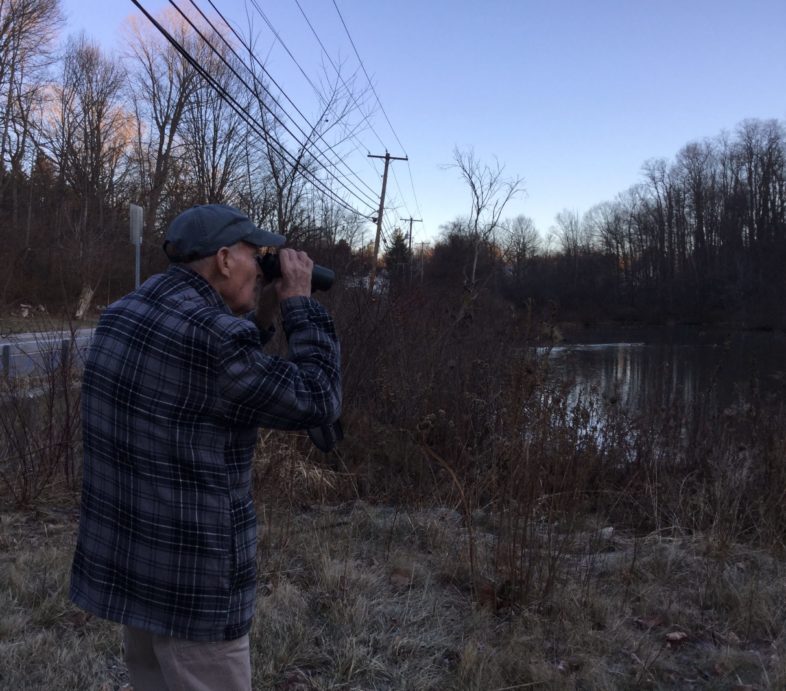
Fred (Pat) Pratt keenly observing a Northern Shoveler pair at dusk on Lake Paran in North Bennington—species #150 in Bennington County during 2019, his final tally to reach that milestone in all of Vermont’s 14 counties. © Alison Wagner
Quietly, methodically, patiently, persistently, and always enthusiastically, Fred (Pat) Pratt has scoured the State of Vermont on a remarkable birding odyssey for eight years. This year, he made Vermont birding history with his discovery of a pair of Northern Shovelers at Lake Paran in North Bennington. That sighting—unremarkable in itself, perhaps—signaled the end of a legendary quest and Pat’s achievement of a formidable goal, one which any birder will be challenged to match ever again. Those shovelers marked species #150 for Pat in Bennington County during 2019, and the final capstone in his mission to document 150 species in all of Vermont’s 14 counties, each within a calendar year! Read the more about this amazing story on the VCE Blog. We have a feeling we may be crowning another member of the 14th Star Award in 2020! Craig Provost has just one more county left to conquer.
The Vermont 250 Club
The Vermont 250 Club requires even more dedication. This is a list of eBirders who’ve found 250 or more bird species in Vermont during one calendar year and reported them to Vermont eBird. To complete this, birders have to find about 90% of the species found in Vermont in any given year. Jim Mead has passed 250 species 8 times in the last 9 years! This year, Henry Trombley joined him.
Cat Abbott (2018)
Zac Cota (2017)
Eddy Edwards (2017)
Bill Mayville (2017)
Mae Mayville (2017)
Jim Mead (2011, 2012, 2014, 2015, 2016, 2017, 2018, 2019)
Clem Nilan (2018)
Craig Provost (2018)
Graham Rice (2018)
Henry Trombley (2019)
Alison Wagner (2017)
You can see the entire ranked list for each year by visiting the Vermont eBird Top 100.
Congratulations to everyone for a fun year of birding! We hope some of you will vie for top honors in 2020. You can follow the scoreboard all year long and see where you rank. Even if you come up short, all of the data collected in Vermont eBird is valuable for science, education, and conservation. Learn how to make eBirding your New Year’s resolution in 2020. Best of luck eBirding in 2020!
Thank You to All our Volunteers, Collaborators and Sponsors!
We’d like to thank the volunteer data experts that help us keep Vermont eBird data strong – Zac Cota, Sue Elliott, Spencer Hardy, Kyle Jones, Craig Provost, Nathaniel Sharp and Ian Worley. Every record entered into Vermont eBird is checked for accuracy, first by automated filters that flag unusual records, and then by expert reviewers who devote their personal time to ensure that your lists and the eBird database are as accurate as possible. Additionally, Ron Payne, and Ian Worley are hotspot editors for Vermont. If you run into them while out birding, let them know you are thankful for their hard work and contribution behind the scenes at Vermont eBird.
And finally, thank you to all of Vermont eBird collaborators and sponsors that help make Vermont eBird a special place.
